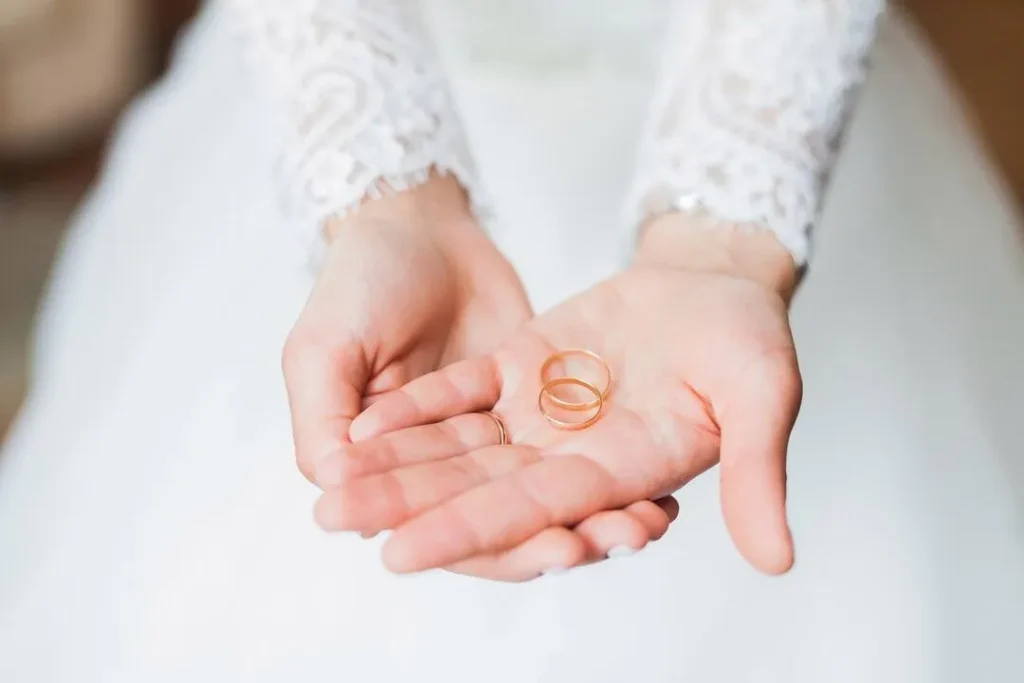Exploring Global Wedding Ring Traditions

Wedding ring traditions are more than simple bands of metal. They carry deep meaning across many cultures and countries. From gold bands to carved wooden rings, styles vary greatly.
Each tradition tells a unique story of love and commitment. Some rings are worn on the left hand, others on the right. Materials, ceremonies, and customs also differ from place to place.
Why do these traditions mean so much to couples worldwide? Let’s explore the beautiful and diverse ways people honor marriage with rings around the globe.
Ancient Egypt: Circles of Eternal Love
In Ancient Egypt, wedding rings symbolized never-ending love and life. The circle, having no end, was a perfect symbol for marriage. Couples often used braided hemp or leather as rings.
They wore the rings on the fourth finger of the left hand. Egyptians believed a vein in that finger led directly to the heart. This belief influenced other cultures as well.
The materials used were simple but meaningful. These early wedding rings focused more on symbolism than on value.
Today, that same meaning still holds power. The tradition of heart-connected fingers lives on in modern rings.
India: Toe Rings and Tradition
In India, married women often wear toe rings, known as bichiya. These are usually made of silver and worn on the second toe. Indian brides may also receive gold wedding bands during the ceremony.
Jewelry plays a huge role in Indian weddings. Each piece tells a story and carries deep cultural value. Regional customs vary, but the use of symbolic rings is common.
Wedding rings in India reflect family ties and blessings. They are more than decoration-they show marital status and tradition. Indian ring customs are rich with history and meaning that continue today.
Japan: Modern Blends With Meaning
In Japan, wedding rings became common only in the 20th century. Western influence introduced the tradition of exchanging rings. Today, most Japanese couples use simple bands of platinum or gold.
Minimalist styles are very popular in Japan. Rings are often engraved with the wedding date or initials. The ceremony might be Western-style or traditional Shinto.
Regardless of the style, the rings show love and unity. Even in modern Japan, couples value symbols of commitment. These wedding rings quietly express deep emotions in a personal and elegant way.
Kenya: Beads, Beauty, and Bonding
In parts of Kenya, wedding jewelry includes colorful beads and metal bands. Among the Maasai, brides wear elaborate beadwork to mark the wedding. These beads represent beauty, age, and social status.
Some communities use rings made from local materials like brass. The ceremony often involves blessings and gifts from family elders. Wedding rings may not be standard, but symbols of union are still strong.
Kenyan traditions focus on community and connection. These customs remind us that love takes many cultural forms. They show how marriage is honored beyond typical ring exchanges.
Russia: Rings on the Right Hand
Russian wedding rings are typically worn on the right hand. This tradition sets them apart from many Western countries.
Couples exchange plain gold bands during the ceremony. Some rings feature three interlocking bands in gold, white, and rose. These colors symbolize love, fidelity, and friendship.
The ceremony may be religious or civil. Either way, the exchange of rings is central. Russians see the ring as a complete circle of unity.
Wearing wedding rings is a visible way to show commitment. The custom is simple but carries deep personal meaning.
Brazil: Double Rings, Shared Promises
In Brazil, both partners wear rings during the engagement. These same rings are used during the wedding ceremony. After the ceremony, the couple moves the rings to their right hand.
This shows that the marriage has officially begun. The traditional values equal commitment from both people. Couples often engrave names or special messages inside the rings.
Brazilian wedding rings blend personal meaning with cultural practice. Their use before and after the wedding shows how promises grow. It’s a beautiful way to share love through a shared symbol.
Jewish Traditions: Simple Gold for Sacred Vows
In traditional Jewish weddings, the ring must be simple and unbroken. It is usually a plain gold band with no stones or designs. This reflects purity and equality in marriage.
The groom places the ring on the bride’s index finger. This tradition is based on ancient teachings. In some ceremonies, both partners now exchange rings.
Wedding rings in Jewish culture focus on honesty and unity. They symbolize a strong and sacred bond. The beauty lies in their simplicity and spiritual meaning, not in the cost or complexity of the design.
United States: Sparkle Meets Symbolism
In the United States, diamond rings are highly popular. Couples often choose rings from trusted retailers, like those offering elegant collections of wedding rings. These rings are exchanged during vows and worn on the left hand.
Many are made of gold, platinum, or silver. Personalization, such as engravings or added gems, is common. The rings represent both love and legal union.
Trends change, but the emotional meaning stays strong. American wedding ring traditions mix style and sentiment. They reflect both individual taste and shared values in relationships.
Ireland: Claddagh Rings and Celtic Symbols
In Ireland, the Claddagh ring is a beloved wedding symbol. It features a heart held by two hands, topped with a crown. The heart stands for love, the hands for friendship, and the crown for loyalty.
Couples wear it differently before and after marriage. When worn on the left hand with the heart facing inward, it shows the person is married. The ring connects deeply to Irish heritage and tradition.
Sometimes passed down through generations, it holds family meaning, too. Though simple in design, Claddagh wedding rings carry rich stories. They reflect both cultural pride and romantic devotion.
Wedding Ring Traditions: A World of Love in Every Ring
Wedding ring traditions differ across cultures but share a deep purpose. They symbolize love, unity, and the promises couples make. Some rings are simple; others are full of color and detail.
From Egypt to Ireland, these customs tell powerful stories. They help connect the past, present, and future in each couple’s journey.
Exploring these traditions shows how diverse and meaningful marriage can be. No matter where you live, wedding rings carry heartfelt emotion and honor.
Did you find this article helpful? If so, check out the rest of our site for more informative content.





